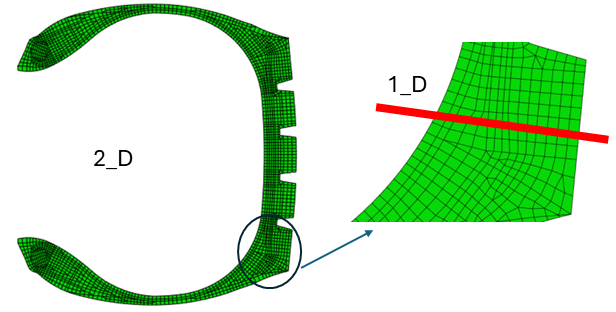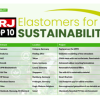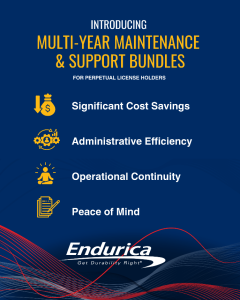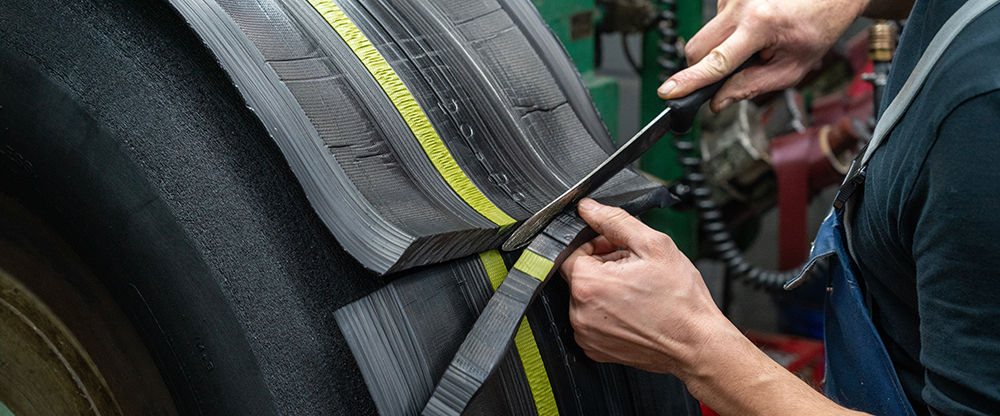
How to Keep Retreaded Tires Rolling Longer (hint: oxidation is key)
When it comes to building a greener future, the tire industry has a powerful ally: retreading. This time-tested practice extends tire life, reduces waste, and delivers major environmental and economic benefits. Endurica provides new tools to understand and manage rubber oxidation, making tire sustainability potential by retreading even stronger.
Retreading: A Proven Sustainability Champion
Every year, an estimated 18–20 million tires are given a second (or third) life through retreading:
- Truck & Bus: 15–17 million
- Aviation, OTR (Off-the-Road), Consumer: 1–3 million
- 90% of RMT–OTR tires are retreaded at least once
- Aircraft tires are often retreaded 3–5 times
Each retreaded tire means fewer raw materials consumed, less manufacturing energy used, and significantly lower CO₂ emissions. It’s a critical part of the Circular Economy Action Plan, helping industries and consumers alike reduce their environmental footprint while saving money.
The Hidden Challenge: Rubber Oxidation
Over time, oxygen slowly diffuses into rubber, breaking down its molecular structure. This leads to:
- Loss of elasticity
- Increased brittleness
- Reduced flexibility and fatigue resistance
If left unchecked, oxidation can shorten the service life of tire casings making it harder to maximize the value of retreading.
Environmental Advantages of Retreading
Compared to producing new tires, retreading offers clear sustainability wins:
- Reduced raw material use — less demand for rubber, steel, and fabric.
- Lower energy and CO₂ emissions — reusing the casing saves production energy.
- Less landfill waste — fewer discarded tires piling up.
- Lower water and chemical pollution — less impact on ecosystems.
In practical terms, retreading often means removing the worn tread cap, while retaining and inspecting the tread base and casing, preserving much of the original tire.

A Smarter Approach to Tire Life Extension
At Endurica, we’re making retreading even more sustainable with new oxidation modeling capabilities. These tools help tire manufacturers and retreaders:
- Predict oxidation-related degradation before it becomes critical
- Set data-driven acceptance criteria for casing reuse
- Extend casing life while ensuring safety and performance
By combining retreading expertise with oxidation science, we can keep tires rolling longer, reduce environmental impact, and strengthen the economics of tire reuse.
Technical Summary — Defining the Oxidation Threshold
The critical oxygen absorption level is the point where rubber loses its mechanical integrity depending on the rubber formulation, environmental exposure, and antioxidant content.
When this threshold is exceeded, tires are at risk for:
- Accelerated wear
- Blowouts
- Tread separation
To address this, a numerical oxygen diffusion model was developed by Endurica to:
- Map oxygen concentration across the casing surface.
- Calculate the time to reach the critical O₂ threshold.
- Include antioxidant effects to account for degradation prevention against heat, oxygen, and ozone.
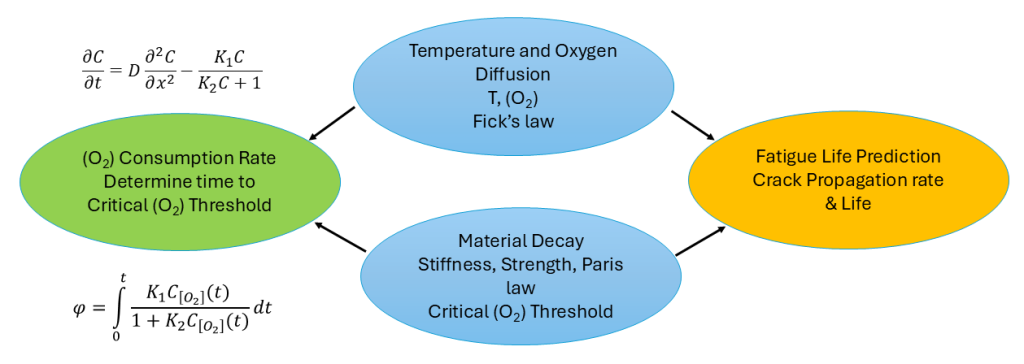
Endurica Modeling capabilities:
- 3D or 2D finite element model for detailed casing simulations.
- 1D analytical/numerical Python or Fortran tools for rapid assessments.

The Bottom Line
Retreading is already a cornerstone of tire sustainability. With oxidation threshold modeling provided by Endurica, the tire industry can push the limits of casing reuse safely by keeping more tires out of landfills, lowering environmental impact, and delivering better economic returns. Retreading is good for the environment.
Extended Invitation
At Endurica, we’re excited to share the results of our ongoing work to develop simulation tools that help the tire industry evaluate the suitability of used tires for retreading based on their oxidative state. These advancements aim to expand the use of our numerical methods, giving manufacturers and retreaters reliable, science-driven insights.
 We invite you to join us at the 2025 Tire Society Conference in Akron, Ohio, for a first-hand look at this work. Dr. Mahmoud Assaad, Endurica’s Senior Technical Advisor, will present two technical sessions showcasing our latest developments and their impact on tire sustainability.
We invite you to join us at the 2025 Tire Society Conference in Akron, Ohio, for a first-hand look at this work. Dr. Mahmoud Assaad, Endurica’s Senior Technical Advisor, will present two technical sessions showcasing our latest developments and their impact on tire sustainability.

